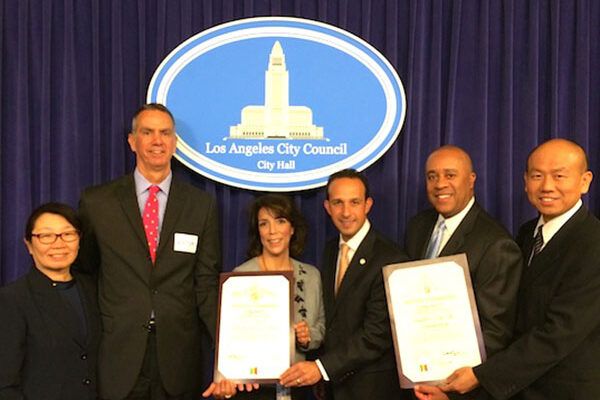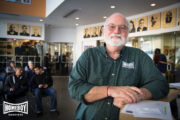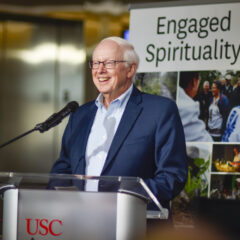This post was a speech delivered to the Los Angeles City Council and a gathering of religious leaders whose communities are working with the City on disaster preparedness.
Good morning, it is an honor to be here. My name is Dr. Richard Flory, and I am the director of research at the USC Center for Religion and Civic Culture. The Center was founded in the aftermath of the 1992 civil unrest, initially to understand the emergence of various religious coalitions and networks working to “heal the City.” The Center now works to create, translate and disseminate scholarship on the civic role of religion both in Los Angeles and globally. It also serves as a facilitator, trainer and convener of religious groups seeking to work in the public sphere. On behalf of each of the groups here today, thank you for the recognition of the important work they are doing. I would like to take the next couple of minutes to make a few comments about their work.
It is important to note that the groups recognized here today represent over 4,000 religious congregations in the city of Los Angeles (which does not include the hundreds of faith-based nonprofit organizations in the City, or the 5,000 other congregations in L.A. County). Contrary to how most people think about religion in global cities, religion of all sorts is a vibrant and fundamental component of urban life, including in the great city of Los Angeles.
Religious groups fulfill many roles in the public sphere, not only as sources of spiritual support, but also by providing services such as feeding, clothing, counseling and education. They are also meeting spaces and essential nodes of communication in their communities. In the event of a disaster, all of these are key competencies and capacities that can be leveraged not only for members of particular congregations, but more generally for the communities in which they are located.
Primarily through the involvement and leadership of Joann Troncale, the City Emergency Management Department is taking the lead in convening the Faith Roundtable, which meets quarterly to increase preparedness, and more regularly convenes faith-sector leaders to engage on related issues. These efforts have integrated faith communities into plans and exercises within the Business Operations Center of the City Emergency Management Department. The partners in this work are the faith communities themselves (many of which are represented here), the Red Cross, the USC Center for Religion and Civic Culture, the Los Angeles Emergency Preparedness Foundation and the DHS Center for Faith-Based and Community Partnerships.
This is groundbreaking work both locally and nationally, and places faith communities squarely at the partnership table in disaster preparedness.
Often, however, different and sometimes competing governmental bureaucratic requirements stifle the efforts of the faith community to work in public sphere. Two brief examples will illustrate: In one instance, a local church of about 300 members intended to upgrade its kitchen to better serve the church’s ongoing feeding program as well as to act as a force multiplier for relief efforts in the event of a disaster. What was quoted as a $100,000 project by the church’s contractor turned into a $1 million project once all the codes and requirements were included in the cost. The kitchen was never upgraded. In another instance, changing building codes (again for a kitchen upgrade) required a newly installed floor to be torn out and redone, in order to meet the unpredictably evolving code requirements.
We all understand the need for building codes; however, there is a pressing need for the City and the County to work together to lower the burden for all groups to enable them to provide services today so that they can extend those services during a disaster, especially services such as mass feedings and shelter.
In the end, we all know it’s not whether a disaster will happen in Los Angeles, it is when. If we can all agree that key community institutions such as churches, synagogues, mosques, temples, gurdwaras and the like can effectively be included in City and County efforts to prepare for disasters and to help facilitate recovery, Los Angeles will be taking a big step toward being the resilient city that it seeks to be.
For more information, please see CRCC’s resources on religious literacy and competency in emergency management at the national level, as well as other articles on disaster response.
Richard Flory is the executive director of the USC Center for Religion and Civic Culture.



